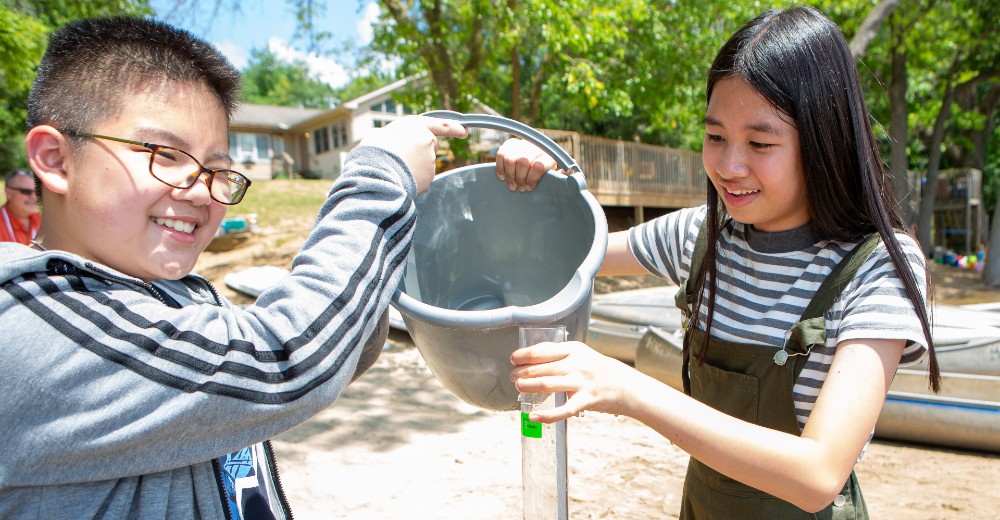Elementary GLOBE - Elementary GLOBE
Elementary GLOBE

Elementary GLOBE's modules introduce students in primary grades (Grades K-4) to the various aspects of Earth system science. Using a storybook approach, the modules utilize a science-based, fictional narrative to engage students in the scientific method. The modules also challenge them to extend their lessons into the natural world through observation and measurement of their surrounding environment.
Each module of Elementary GLOBE includes:
-
A science-based, fictional storybook in which kids explore an aspect of the Earth system using their scientific skills.
-
Three learning activities that further explore the lesson content and help students develop sound science and engineering approaches to complex problems.
-
A glossary and teacher’s notes that provide educators with the necessary background information to further assist their students with each module.
The Teacher Implementation Guide
The Implementation Guide includes:
- An overview of Elementary GLOBE
- The connections the curriculum makes to literacy and other areas of the elementary curriculum
- The usage of science journals
- Scientific inquiry in the elementary curriculum
- Standards alignment
Translated versions
GLOBE strives to provide translations of our materials in the official U.N. languages.
Currently, these resources are available in:
To download a translated version, click on the corresponding language below. Not all storybooks and activities have been translated into every language. To add a language to this list, contact the GLOBE Implementation Office for more information about translation approval.
Elementary GLOBE Translations: العربية| Français | Deutsch | Norsk | Español
Modules
Air QualityStudents will investigate why aerosols and other types of air pollution affect the color of the sky. They will also learn how to describe the sky color and the underlying conditions in the atmosphere. |
|
ClimateStudents will learn about regional climate variations and how climate change is affecting our world. Then, they will brainstorm ways to solve climate change. |
|
CloudsStudents will explore how different types of clouds can be described through analogy. As they start understanding how to observe clouds, they will create models of the different cloud types and contrails. |
|
Earth SystemStudents will examine how water, air, soil and living creatures interact within the Earth system. They will also learn the importance of each role to the planet's ecology. |
|
SeasonsStudents will discover how hummingbirds deal with seasonal changes. To broaden their scope, they will use science journals to describe the changes in their own local environment as it cycles through the different seasons. |
|
SoilsStudents will investigate why different locations have different soil characteristics. They will also learn how to describe the matter found within the soil and explain why it is so important to plants and animals. |
|
WaterStudents will learn how to describe a creek by making observations, taking measurements and investigating its macroinvertebrates. To accomplish this, they will be introduced to measurement tools, such as rulers and magnifying glasses. |





